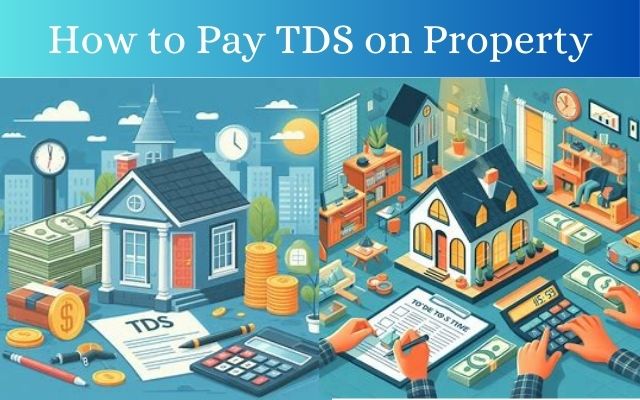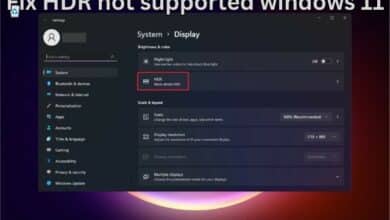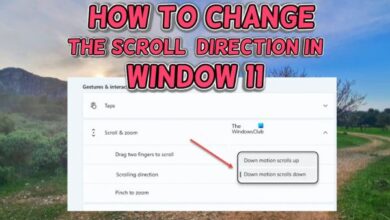How to Pay TDS on Property: A Comprehensive Guide

How to pay TDS on property is a topic that often leaves property buyers perplexed. This process, although seemingly complex, is a crucial part of property transactions in India. The Tax Deducted at Source (TDS) on property is a tax collection method introduced by the Income Tax Department. It ensures that tax is deducted from the income at the time of generation rather than at a later date.
Understanding how to pay TDS on property can seem daunting, especially for first-time property buyers. However, with the right knowledge and guidance, it can be a straightforward process. This article aims to demystify the process and provide a step-by-step guide to paying TDS on property. By the end of this article, you will have a clear understanding of the process, making your property buying experience smoother and more enjoyable. Let’s delve into the details.
What is TDS on Property
Tax Deducted at Source, or TDS, is a means of collecting income tax in India, under the Indian Income Tax Act of 1961. One of its applications is in the realm of property transactions, where it is levied on the sale of immovable property.
TDS on property refers to the tax that is deducted by the buyer of the property at the time of making payment to the seller. It is applicable to all property transactions where the sale price is equal to or exceeds Rs 50 lakh. However, from April 1, 2022, TDS is required to be deducted if the stamp duty value of the property is also Rs 50 lakh or more.
The rate of TDS on property transactions is 1% of the total transaction amount. However, if the seller is a non-resident Indian (NRI), the TDS rates are different.
The buyer is required to deduct the TDS and deposit it with the government. The TDS on the immovable property has to be paid using Form 26QB within 30 days from the end of the month in which the TDS was deducted. After depositing the TDS, the buyer is required to furnish a TDS certificate in Form 16B to the seller.
It’s important to note that the ‘consideration for immovable property’ includes all charges of a similar nature that are incidental to the transfer of the immovable property. This includes charges like club membership fee, car parking fee, electricity or water facility fee, maintenance fee, advance fee, etc.
Understanding how to pay TDS on property is crucial as it helps in ensuring compliance with tax laws and avoiding any legal hassles. Now, we will delve into the eligibility criteria for TDS on property.
Eligibility for TDS on Property
The Tax Deducted at Source (TDS) on property transactions is a crucial aspect of property buying in India. It is the buyer’s responsibility to deduct the TDS and deposit it with the government.
As per the Income Tax Act, TDS on property applies to all property transactions where the sale price or the stamp duty value is equal to or exceeds Rs 50 lakh. This rule has been in effect since April 1, 2022.
The buyer is required to deduct TDS at 1% of the total transaction amount. However, if the seller is a non-resident Indian (NRI), the TDS rates are different.
If the payment is made in installments, then TDS has to be deducted on each installment paid. The ‘consideration for immovable property’ includes all charges of a similar nature that are incidental to the transfer of the immovable property. This includes charges like club membership fee, car parking fee, electricity or water facility fee, maintenance fee, advance fee, etc.
Now, we will guide you through the procedure to pay TDS on property.
Procedure to Pay TDS on Property
The process of paying Tax Deducted at Source (TDS) on property transactions in India is a systematic one, designed to ensure compliance with tax laws. Here’s a step-by-step guide on how to pay TDS on property:
- Identify the Need for TDS: The first step is to determine whether TDS needs to be deducted. If the property transaction value is Rs 50 lakh or more, TDS needs to be deducted.
- Calculate the TDS Amount: The buyer needs to calculate the TDS amount. This is done by deducting 1% of the total transaction amount.
- Deduct the TDS: The buyer should deduct the TDS at the time of making the payment to the seller.
- Deposit the TDS with the Government: The deducted TDS should be deposited with the government within 30 days from the end of the month in which the TDS was deducted.
- Fill Form 26QB: The buyer needs to fill Form 26QB online, which is a statement for tax deduction at source on property transactions. The form requires details such as the PAN of the buyer and seller, address of the property, total transaction amount, and the TDS amount.
- Make the Payment: After filling Form 26QB, the buyer needs to make the payment online using the e-tax payment option. The payment can be made via net banking, debit card, or at a bank counter.
- Generate the Challan: Upon successful payment, a challan is generated showing the details of the payment along with the Challan Identification Number (CIN).
- Download Form 16B: After 5 days of payment, the buyer can download Form 16B from the TRACES portal. Form 16B is the TDS certificate that needs to be provided to the seller as proof of the TDS deduction.
It’s important to note that if the payment is made in installments, then TDS has to be deducted on each installment paid. Also, the ‘consideration for immovable property’ includes all charges of a similar nature that are incidental to the transfer of the immovable property.
In case the seller is a non-resident Indian (NRI), then Form 27Q needs to be filled.
By following these steps, you can ensure that you are in compliance with the tax laws when buying a property. Now, we will discuss some common mistakes to avoid while paying TDS on property.
Common Mistakes to Avoid While Paying TDS on Property
When it comes to paying Tax Deducted at Source (TDS) on property transactions, there are several common mistakes that buyers often make. Being aware of these can help you avoid penalties and ensure compliance with tax laws.
- Incorrect TDS Amount Deduction: The TDS should be 1% of the total transaction amount. Incorrect calculations can lead to underpayment or overpayment.
- Late Payment or Non-Payment of TDS: TDS should be deposited with the government within 30 days from the end of the month in which the TDS was deducted. Late payment can attract interest and penalties.
- Non-Filing or Incorrect Filing of TDS Returns: After depositing the TDS, the buyer should fill Form 26QB online and provide a TDS certificate in Form 16B to the seller. Errors in these forms can lead to complications.
- Incorrect PAN Details: The PAN details of both the buyer and the seller should be correctly mentioned in Form 26QB. Any discrepancy can lead to issues in TDS credit.
Avoiding these mistakes can help ensure a smooth property transaction. Now, we will discuss the legal implications of not paying TDS on property.
Legal Implications of Not Paying TDS on Property
Failing to pay Tax Deducted at Source (TDS) on property transactions can lead to serious legal consequences. If a person fails to deduct the whole or any part of the tax at source, or, after deducting, fails to pay the whole or any part of the tax to the credit of the Central Government within the prescribed time, they are deemed to be an assessee-in-default.
This can result in the following penalties:
- Disallowance of expenditure under section 40 (a) (i) and section 40 (a) (ia) of the Income-tax Act.
- Levy of interest under Section 221.
- Levy of Penalty under section 271C for TDS non-deduction or non-payment.
- Prosecution under Section 276B.
In extreme cases, it can even lead to imprisonment. Therefore, it is crucial to understand and comply with the TDS provisions to avoid these consequences.
FAQ
How to pay TDS on property purchase step by step?
- Identify if TDS needs to be deducted (if the property transaction value is Rs 50 lakh or more).
- Calculate the TDS amount (1% of the total transaction amount).
- Deduct the TDS at the time of making the payment to the seller.
- Deposit the TDS with the government within 30 days from the end of the month in which the TDS was deducted.
- Fill Form 26QB online.
- Make the payment online using the e-tax payment option.
- Generate the Challan upon successful payment.
- Download Form 16B from the TRACES portal after 5 days of payment.
How do I pay TDS on residential property?
The process is the same as above. The TDS should be paid if the property transaction value is Rs 50 lakh or more.
How do I pay TDS manually?
Manual payment of TDS can be done at designated bank branches. You need to fill in the Challan 281 form and submit it along with the payment.
How to fill Form 26QB if more than one seller?
If there is more than one seller, separate Form 26QB needs to be filled for each seller considering the amount paid to each seller and TDS deducted accordingly.
How to pay TDS after Form 26QB?
After filling Form 26QB, you need to make the payment online using the e-tax payment option. Upon successful payment, a challan is generated.
What is the mode of payment for property purchase?
The payment for property purchase can be made through various modes like cheque, demand draft, electronic transfer, etc. The mode of payment does not affect the TDS deduction.
How do I pay my 26QB offline?
Offline payment of Form 26QB can be done at designated bank branches. You need to fill in the form and submit it along with the payment.
How to fill form 26QB for two buyers?
If there are two buyers, separate Form 26QB needs to be filled for each buyer considering the amount paid by each buyer and TDS deducted accordingly.
How can I pay TDS without net banking?
If you do not have net banking, you can pay TDS by visiting a designated bank branch. You need to fill in the Challan 281 form and submit it along with the payment.
- Why RBI Banned Paytm Payments Bank: A Comprehensive Analysis
- Apple Pay Not Working on iPhone: 7 Proven Fixes
- How to Use Apple Pay on your iPhone 8: Maximize Efficiency
Conclusion
Understanding and paying TDS on property transactions is a crucial aspect of property buying in India. By following the guidelines and procedures outlined in this article, you can ensure compliance with tax laws and make your property buying experience smoother. Remember, a well-informed buyer is a smart buyer! Stay informed, stay compliant. Happy property buying!






